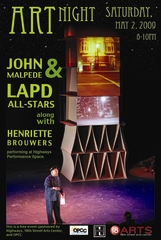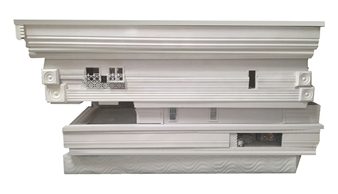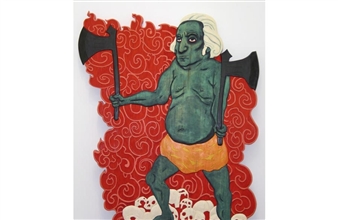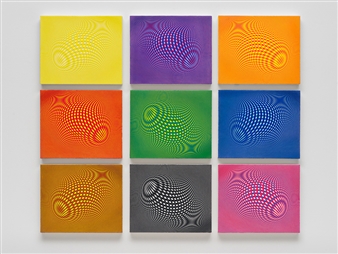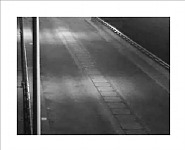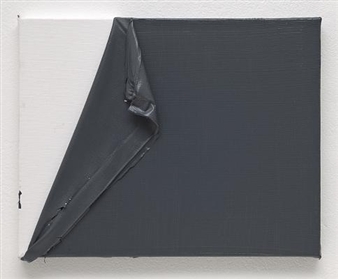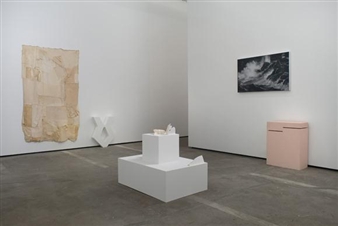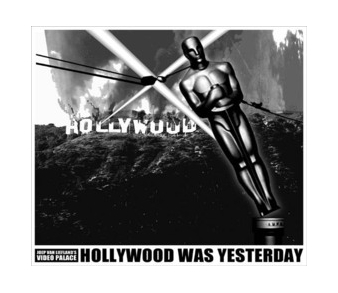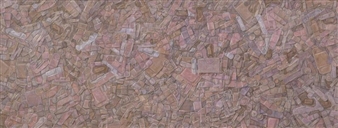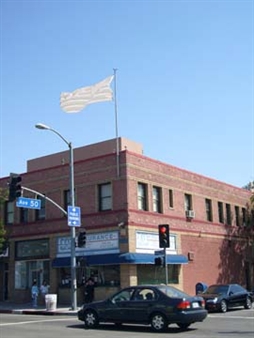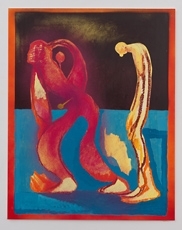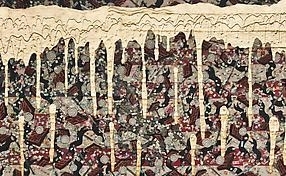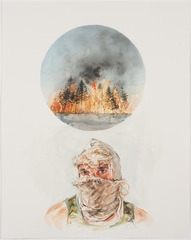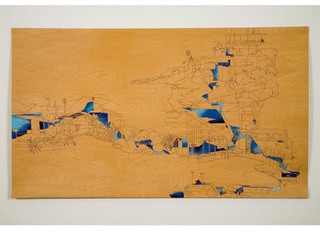A Book and a Medal: Disentanglement Equals Homogenous Abstractions
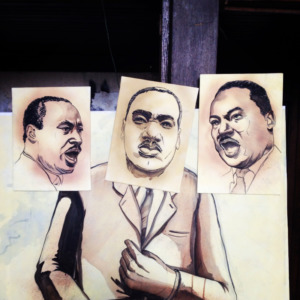
Susanne Vielmetter Los Angeles Projects, California, Los Angeles, 09/06/2014 - 10/18/2014
ABOUT
Susanne Vielmetter Los Angeles Projects is pleased to present a solo exhibition of new work by Edgar Arceneaux. The future-focused humanitarianism of Civil Rights leader Dr. Martin Luther King Jr. is the central leitmotif in “A Book and a Medal: Disentanglement Equals Homogenous Abstractions,” the newest body of work by Edgar Arceneaux.
In the feature-length film “A Time To Break Silence,” presented as an installation, Arceneaux specifically links two events from the 1960s as a means to ruminate on their legacies and implications for the future of American cities. The work is titled after Dr. King’s last major speech, “Beyond Vietnam,” in which he decries U.S. involvement in the war as an “enemy of the poor.” King was killed exactly one year later, in 1968, two days before Stanley Kubrick’s “2001: A Space Odyssey” premiered in Washington, D.C. In Arceneaux’s film, Dr. King reprises his speech in Detroit’s Saint Anne's church, which figures as a timeless ruin, while a prehistoric man named Stargazer aimlessly explores his alien environment. Both “2001” and Dr. King’s speech address technology in dual terms, as both tool and weapon, a link amplified by Arceneaux’s collaboration with Underground Resistance, Detroit techno music innovators, who produced the musical elements for the film. With these two intertextual references, Arceneaux's film stages how the technologies we use are produced by the same evolutionary forces that produced us.
The sculpture “A Book and a Medal” (after which the exhibition is named) is comprised of a partially redacted anonymous letter sent to Dr. King in 1964, calling for him to commit suicide or face severe consequences. Later revealed to be what its creators J. Edgar Hoover and the FBI called the Suicide Package, the letter was accompanied by tapes of FBI wiretaps outlining King’s extramarital liaisons. The letter itself contains redacted sections that are believed to refer to the content of the tapes.
Next, three reflective panels pivot at ninety degrees to the gallery wall, repeating the letter's redactions as mirrored forms that transpose their environment – the room and viewer. Arceneaux refers to them as a four-dimensional shadow that traverses fifty years of time, a double metaphor alluding to the vulnerabilities of a man and his family as well as the invisible economic and ideological forces that were radically reshaping the U.S. In the fifth panel of new paintings, referencing a statement from Dr. King’s daughter, Dr. Bernice A. King, King’s Nobel Peace Prize and Bible have transitioned from symbols of a quest for social betterment to high-priced, rarified relics pitting social and symbolic exchange values in conflict with each other, tearing apart a family and a legacy in the process.
“A Time To Break Silence” and the sculpture “A Book and Medal” frame the exhibition's central narratives while shadows, redactions, reflections, and fragments are the archetypal elements further explored in Arceneaux’s new drawings, paintings, and sculptures made for the show. The series “King Vanitas” are paintings on mirror that play on the dual meanings of vanity—the 14th-century notion of “vanitas” that refers to the futility of life and the fruitlessness of human effort and vanity as pride or hubris. Created with a complex range of materials from mirror, paper, cloth, and steel, the new works complete the exhibition's grand arc, the political history of the Civil Rights Movement, economic value, surveillance and the nature of sin.
For More Information
Susanne Vielmetter Los Angeles Projects is pleased to present a solo exhibition of new work by Edgar Arceneaux. The future-focused humanitarianism of Civil Rights leader Dr. Martin Luther King Jr. is the central leitmotif in “A Book and a Medal: Disentanglement Equals Homogenous Abstractions,” the newest body of work by Edgar Arceneaux.
In the feature-length film “A Time To Break Silence,” presented as an installation, Arceneaux specifically links two events from the 1960s as a means to ruminate on their legacies and implications for the future of American cities. The work is titled after Dr. King’s last major speech, “Beyond Vietnam,” in which he decries U.S. involvement in the war as an “enemy of the poor.” King was killed exactly one year later, in 1968, two days before Stanley Kubrick’s “2001: A Space Odyssey” premiered in Washington, D.C. In Arceneaux’s film, Dr. King reprises his speech in Detroit’s Saint Anne's church, which figures as a timeless ruin, while a prehistoric man named Stargazer aimlessly explores his alien environment. Both “2001” and Dr. King’s speech address technology in dual terms, as both tool and weapon, a link amplified by Arceneaux’s collaboration with Underground Resistance, Detroit techno music innovators, who produced the musical elements for the film. With these two intertextual references, Arceneaux's film stages how the technologies we use are produced by the same evolutionary forces that produced us.
The sculpture “A Book and a Medal” (after which the exhibition is named) is comprised of a partially redacted anonymous letter sent to Dr. King in 1964, calling for him to commit suicide or face severe consequences. Later revealed to be what its creators J. Edgar Hoover and the FBI called the Suicide Package, the letter was accompanied by tapes of FBI wiretaps outlining King’s extramarital liaisons. The letter itself contains redacted sections that are believed to refer to the content of the tapes.
Next, three reflective panels pivot at ninety degrees to the gallery wall, repeating the letter's redactions as mirrored forms that transpose their environment – the room and viewer. Arceneaux refers to them as a four-dimensional shadow that traverses fifty years of time, a double metaphor alluding to the vulnerabilities of a man and his family as well as the invisible economic and ideological forces that were radically reshaping the U.S. In the fifth panel of new paintings, referencing a statement from Dr. King’s daughter, Dr. Bernice A. King, King’s Nobel Peace Prize and Bible have transitioned from symbols of a quest for social betterment to high-priced, rarified relics pitting social and symbolic exchange values in conflict with each other, tearing apart a family and a legacy in the process.
“A Time To Break Silence” and the sculpture “A Book and Medal” frame the exhibition's central narratives while shadows, redactions, reflections, and fragments are the archetypal elements further explored in Arceneaux’s new drawings, paintings, and sculptures made for the show. The series “King Vanitas” are paintings on mirror that play on the dual meanings of vanity—the 14th-century notion of “vanitas” that refers to the futility of life and the fruitlessness of human effort and vanity as pride or hubris. Created with a complex range of materials from mirror, paper, cloth, and steel, the new works complete the exhibition's grand arc, the political history of the Civil Rights Movement, economic value, surveillance and the nature of sin.


